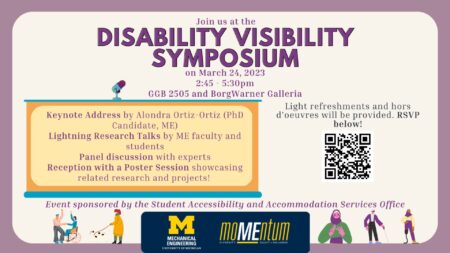DEI Alliance Disability Visibility Symposium
2505 GGB 2350 Hayward St, Ann Arbor, MI, United StatesPlease join the DEI Alliance at their hybrid Disability Visibility symposium that will highlight how engineering research is working to improve accessibility for people who identify as having a disability. We would love for you to attend the symposium and participate in the discussion about how we can all work to improve accessibility in classrooms, […]


